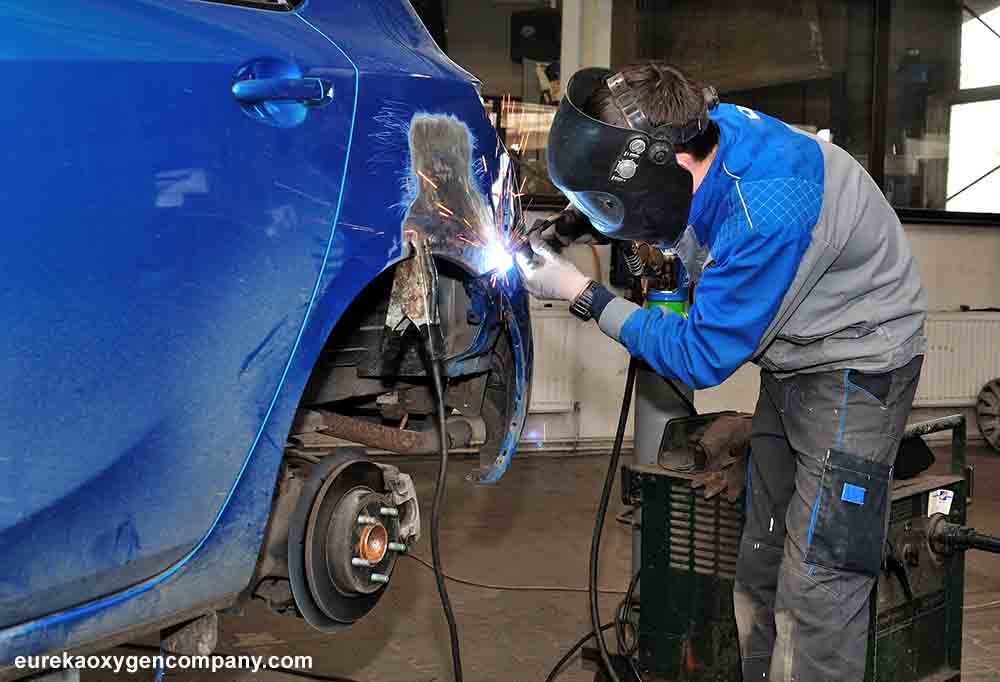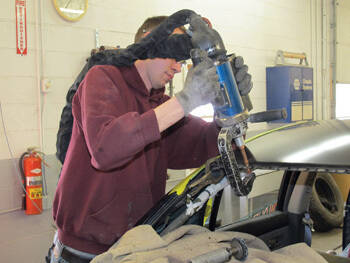Root reasons behind weld porosity and how Belgrade Welding addresses them
Usual Welding Repair Service Issues and How to Address Them Effectively
Welding repairs commonly run into a variety of issues that can jeopardize the stability of the final product. Common issues include poor infiltration, porosity, and misalignment, to name a few. Each issue provides special difficulties that need details techniques for resolution. Recognizing these issues is vital for welders aiming to improve their results and abilities. This discussion will certainly discover these common welding repair service concerns and reliable approaches to resolve them.
Insufficient Penetration
Poor penetration occurs when the weld metal fails to totally fuse with the base product, resulting in weak joints and prospective architectural failings. This concern usually originates from insufficient heat input, wrong electrode angle, or incorrect welding rate. Welders may encounter inadequate infiltration as a result of a miscalculation of the necessary parameters for a specific product thickness or kind. In addition, contamination on the base material's surface area can impede efficient bonding, worsening the trouble. To address inadequate infiltration, welders must guarantee proper settings on their equipment and preserve a clean work surface area. Normal examination of welds is suggested to recognize any shortages early, permitting prompt adjustments and the prevention of compromised architectural integrity in welded settings up.
Porosity
Porosity is a typical defect in welded joints that shows up as small gas bubbles caught within the weld steel. This issue can compromise the stability of the weld, causing decreased strength and possible failure under stress. Montana Mobile Welding and Repair Belgrade. Porosity usually emerges from contamination, wetness, or improper welding techniques, which enable gases to get away into the molten weld pool. To address porosity, welders ought to assure correct surface prep work, maintain a clean workplace, and utilize appropriate welding specifications. Furthermore, selecting the appropriate filler product and shielding gas can mitigate gas entrapment. Regular inspection and testing of welds can aid identify porosity early, assuring prompt restorative activities are taken, thus protecting the high quality and dependability of the welded framework
Misalignment
Misalignment in welding can arise from various aspects, consisting of improper arrangement and thermal development. Comprehending the origin triggers is vital for efficient resolution. A number of adjustment strategies are available to realign parts and ensure architectural honesty.
Causes of Misalignment
Welding imbalance frequently originates from a range of underlying issues that can jeopardize structural stability. One primary reason is inappropriate fit-up of elements prior to welding, which can result in voids and uneven surfaces. Variations in thermal development during the welding process can additionally result in distortion, especially if the materials being signed up with have different coefficients of development. In addition, insufficient securing and fixturing may fail to hold components safely in position, bring about movement throughout welding. Improperly maintained tools, including welding machines and tools, might present disparities in the weld bead, more adding to misalignment. Operator error, stemming from insufficient training or experience, can additionally play a substantial role in creating misaligned welds.

Correction Strategies Readily Available
Resolving imbalance efficiently needs a combination of restorative methods customized to the certain issues at hand. One typical approach is using components or jigs to hold elements in the appropriate position during welding, making sure consistent alignment. In addition, pre-heating the products can assist reduce distortion and enhance fit-up. For significant imbalance, mechanical adjustment methods, such as utilizing hydraulic jacks or clamps, can be used to remedy the setting prior to welding. Post-weld warm treatment may likewise be necessary to eliminate anxieties created by imbalance. Mindful inspection and adjustment during the arrangement phase can stop imbalance problems from coming to be considerable problems, advertising a smoother welding process and enhancing general architectural stability.
Distortion
Distortion is an usual challenge in welding that can emerge from different elements, including unequal cooling and heating. Recognizing the sources of distortion is important for carrying out effective prevention techniques. Resolving this problem not only enhances structural integrity but likewise boosts the general high quality of the weld.
Reasons of Distortion
When based on the extreme warm of welding, products frequently undergo adjustments that can cause distortion. This phenomenon primarily arises from thermal expansion and contraction during the welding process. As the weld location heats up, the material broadens; upon air conditioning, it contracts, which can develop internal anxieties. On top of that, irregular home heating throughout a work surface can aggravate these stress and anxieties, causing warping or bending. The kind of product likewise plays a significant function; metals with differing thermal conductivity and coefficients of development may respond in different ways, leading to unpredictable distortions. Poor joint layout and inadequate fixturing can contribute to imbalance during welding, increasing the probability of distortion. Comprehending these causes is necessary for reliable welding fixing and avoidance approaches.
Avoidance Techniques
Efficient avoidance strategies for distortion during welding concentrate on regulating warmth input and making certain correct joint design. Preserving a consistent warm input assists to reduce thermal expansion and contraction, which can lead to distortion. Utilizing methods such as pre-heating the work surface can additionally minimize the temperature level slope, promoting consistent heating. Additionally, choosing ideal joint layouts, such as T-joints or lap joints, can boost security and lower tension concentrations. Executing correct fixturing to protect the workpieces in position even more aids in preserving placement during the welding process. Staggered welding sequences can distribute warm much more evenly, preventing local distortion. By applying these approaches, welders can substantially decrease the chance of distortion and improve the general top quality of their welds.
Splitting
Splitting is a typical problem encountered in welding repair work, frequently resulting from different variables such as improper air conditioning prices, product option, or poor joint prep work. The occurrence of fractures can greatly endanger the integrity of the weld, causing possible failures throughout operation. To address this issue, welders have to initially examine the origin triggers, guaranteeing that products are compatible and suitably selected for the specific application. Furthermore, controlling the cooling price throughout the welding process is vital; quick cooling can cause anxiety and lead to these details cracking. Appropriate joint style and prep work additionally add to decreasing the danger. Executing these methods can improve weld high quality and resilience, ultimately reducing the probability of cracking in finished weldments.

Incomplete Combination
A significant issue in welding repairs is incomplete combination, which takes place when the weld steel does not properly bond with the base material or previous weld passes - Montana Mobile Welding and Repair Belgrade Fabrication. This flaw can result in weaknesses in the joint, possibly compromising the stability of the welded structure. Elements adding to incomplete fusion include insufficient warm input, improper welding technique, and contamination of the surfaces being signed up with. To resolve this issue properly, welders should ensure proper pre-weld cleansing and surface area preparation, as well as change their welding specifications to achieve sufficient infiltration and fusion. Routine examination during the welding process can additionally assist identify insufficient combination early, permitting timely rehabilitative measures to enhance the total high quality of the weld
Overheating
While welding repair work can boost structural stability, overheating provides a significant obstacle that can cause material destruction. Excessive warmth during welding can change the mechanical properties of steels, leading to lowered stamina, boosted brittleness, and bending. This phenomenon is specifically essential in high-stress applications where structural dependability is extremely important. Recognizing getting too hot can involve visual evaluations for discoloration or distortion, as well as checking temperature throughout the welding procedure. To minimize the threats related to overheating, welders should use appropriate techniques, such as regulating warmth input, readjusting travel rate, and making use of appropriate filler products. Furthermore, applying pre- and post-weld warmth treatments can assist restore material buildings and enhance the general high quality of the repair work, making certain long-term performance and security.
Often Asked Questions
What Are the Common Indications of a Welding Problem?

Just How Can I Evaluate My Welds for Top quality?
To evaluate welds for top quality, one can make use of visual assessments, ultrasonic screening, and radiographic methods. Each technique assures architectural integrity, determines flaws, and validates adherence to specified requirements, ultimately boosting the dependability of the bonded joints.
What Safety Safety Measures Should I Take While Welding?
When welding, one need to prioritize safety by using ideal personal safety devices, guaranteeing appropriate ventilation, protecting flammable materials away, preserving a clean work area, and understanding surroundings to avoid crashes and injuries.
Can I Fix a Weld Without Renovating the Entire Joint?
Fixing a weld without remodeling the entire joint is feasible, relying on the damage (Belgrade Welding). Strategies such as grinding, adding filler product, best site or utilizing a welding procedure can efficiently resolve certain imperfections while protecting the surrounding structure
What Tools Are Vital for Effective Welding Services?
Important tools for effective welding repair services include a welding equipment, wire brush, mill, protective gear, clamps, and filler products. Each tool plays an important function in guaranteeing quality and security during the repair work procedure. Porosity normally arises from contamination, dampness, or inappropriate welding methods, which permit gases to get away into the molten weld swimming pool. Poorly conserved equipment, including welding equipments and devices, might introduce incongruities in the weld grain, more adding to misalignment. When subjected to the extreme warmth of welding, products often go through changes that over at this website can lead to distortion. Fracturing is an usual issue come across in welding fixings, typically resulting from numerous variables such as improper air conditioning prices, material option, or poor joint prep work. A significant concern in welding repair services is incomplete fusion, which occurs when the weld steel does not sufficiently bond with the base product or previous weld passes.